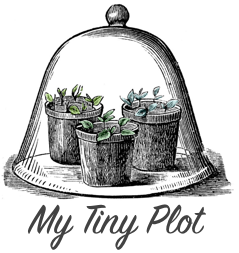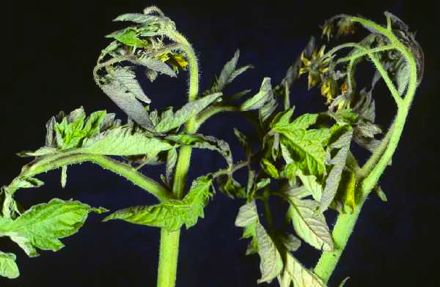How to Spot Curly-Top Virus
Until a few weeks ago I had never heard of Tomato Curly Top Virus. I was manning the phones at the Master Gardener clinic when during a quiet spell my fellow volunteer pulled out a bag with a sick-looking Tomato plant in it. She said it was her neighbour’s plant and she’d brought it in to identify the cause of its demise.
It did look sick. The top leaves were twisted, cupped and rolled. Significantly, the leaves were not wilted but they did have a strange purple hue on their underside. It looked like it had been accidentally sprayed with something nasty. But it hadn’t – after much research we figured out it had Tomato Curly-Top Virus.
The virus is transported by the Beet leafhopper, which is prevalent in the US, Mexico and Mediterranean areas (not generally in the UK unless there is very dry spell). Leafhoppers don’t generally feed on Tomatoes but the virus is acquired from infected plants (usually crops) nearby and then transmitted to the Tomato while the leafhopper is sampling the plant.
There is no treatment for Curly Top Virus. Once transmitted the virus takes over the Tomato plant and it will not set new fruit after infection.
It’s also really difficult to avoid Curly Top Virus as there are currently no resistant varieties of Tomato. Take heart though, in most gardens its occurrence is an isolated problem. If you do find that you have a chronic problem, good ole row-cover or horticultural fleece will protect your plants.
 My Tiny Plot
My Tiny Plot




@mytinyplot sure they weren’t too hot? Significant but harmless rolling can occur in greenhouses, they might just need shade
I was going to add a similar comment to dgjbower as my tomatoes leaves have curled over because we’re having such a hot summer in the UK :o
However, looking at your picture, I suspect the additional clue is the purpling of the leaves. My tomato leaves are still a healthy looking green.